Even during mild winters, periods of severe cold and snow can quickly create hazardous conditions for people performing everyday tasks. When the mercury drops, the danger rises behind the wheel and on the sidewalks. The News 12 Storm Watch Team has compiled the following explainers and tips to help you navigate and stay safe during severe winter weather.
BRIDGE SAFETY
The tri-state area is home to essential bridges - marvels of engineering - that carry hundreds of thousands of cars to their destinations daily.
However, these bridges contain a hidden danger - they freeze faster than normal roadways.
The faster freezing is caused by the increased surface area on a bridge. Unlike a normal road, the bridge is exposed to colder temperatures from both above and below the road surface. This is especially true when the bridge is over a body of cold water.
The type of materials used in building the spans also plays a factor. They are made of metal, which does not retain heat very well.
STAYING SAFE ON THE ROAD
News 12's Jonathan Cubit speaks with driving instructors on the do's and don't of driving in winter weather.
One of the big items: Knowledge. Experts say it's vital to know what the weather conditions will be before you even get in the car.
In addition, mobility can really help drivers in dicey winter weather. Ditching the bulky jacket when you get in the car can help you make quick driving adjustments on the fly while behind the wheel.
Have a 4-wheel drive vehicle? Don't let it give you a false sense of security. That feature won't help you slow down or stop a skid.
Jonathan speaks to driving instructor Mike Stillwagon for crucial winter driving safety tips.
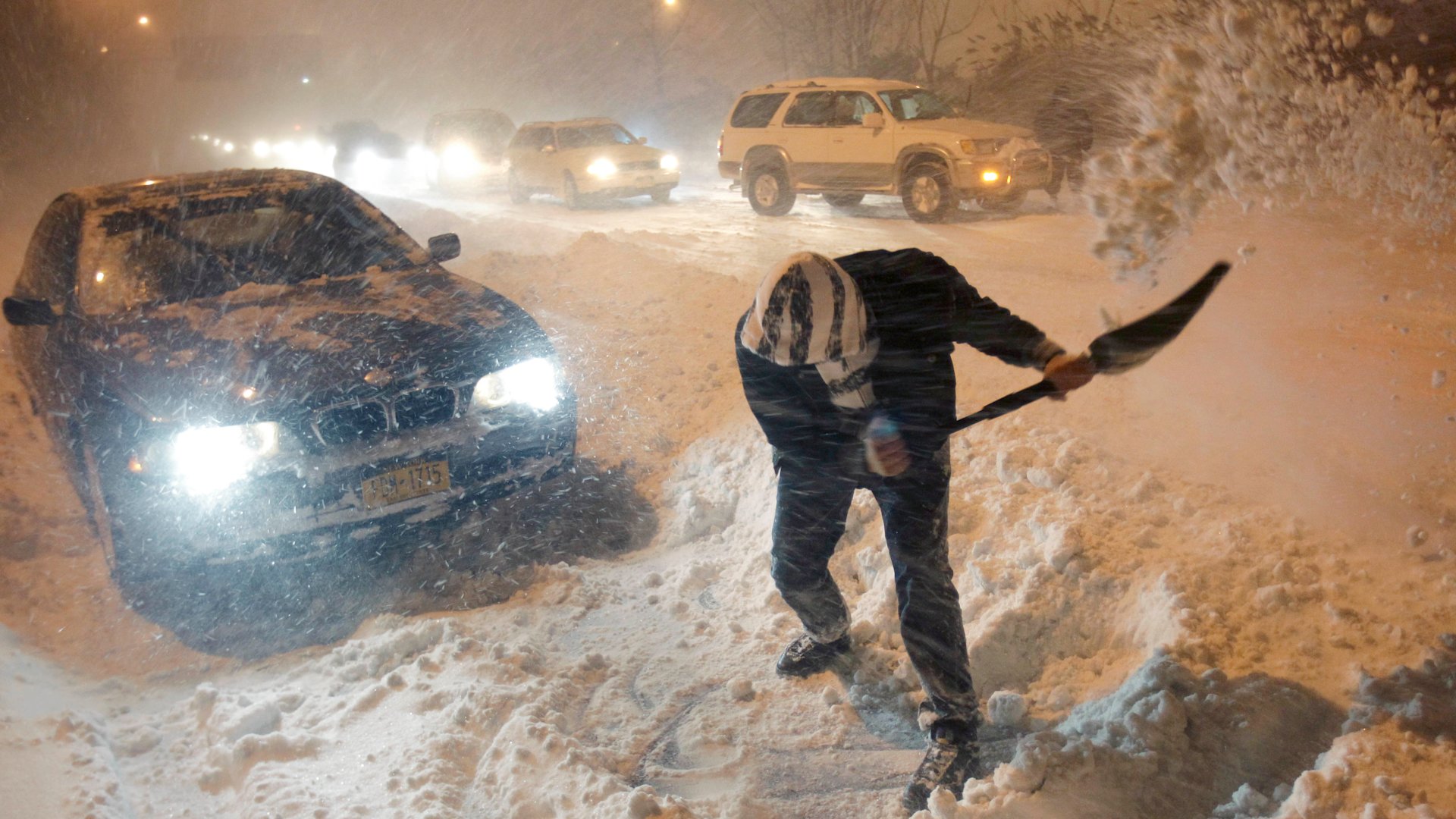 A man tries to dig his car out of the snow while a line of cars behind him waits for the LIE to reopen during a snowstorm. (AP Photo/Seth Wenig)
A man tries to dig his car out of the snow while a line of cars behind him waits for the LIE to reopen during a snowstorm. (AP Photo/Seth Wenig)
DRIVING IN A SNOW SQUALL
The winter of 2022/2023 has been pretty tame so far, but that can change very quickly. A quick moving, limited but intense shot of snow with gusty winds - a snow squall - can catch you off guard if you are not prepared.
A snow squall can quickly limit visibility - sometimes to near zero. This can prove especially dangerous if you are on the road when one hits.
Should you find yourself in that situation, there are certain steps you can take to stay safe.
This video of a snow squall shot in Norwalk, Connecticut shows how dangerous conditions can get. Video by Christina Green.
First, reduce speed immediately. However, do not slam on your brakes. Hitting the brakes too intensely can make the situation worse.
Once you have reduced speed, put on your low beams and hazards. Then, safely pull over to the side of the road. Squalls typically pass in 30 minutes or less.
ROAD READY
Most drivers probably aren't thinking about winter vehicle prep considering the relatively mild temperatures we've been experiencing. However, temps can and do plunge very low as we have seen at some points this winter. Don't wait for a problem to develop in your vehicle before taking action.
Follow these 5 points to keep your vehicle winter ready:
Battery: Check your battery. Replace it if you need to. Better to have a fresh battery than realize it has died in the middle of a storm.
Tires: Make sure your tires still have good treads and that they are
properly inflated. Remember, sudden changes in temperature can affect tire pressure.
Radiators: Check the radiator and make sure it is flushed at least once every two years.
Wiper Blades: This one can be easy to overlook, but it is very important. Make sure you change your wiper blades at the start of the winter season to make sure you can maintain the best possible visibility during precipitation. If snow is in the forecast, pull your blades away from the windshield.
Washer Fluid: Make sure you are using the winter formula so the fluid does not freeze.
 Drone shot of Ossining after the January 2022 nor'easter | Jeremy Ofori
Drone shot of Ossining after the January 2022 nor'easter | Jeremy Ofori
LIFE HACK: QUICK CAR TRACTION
Grab some kitty litter. Even if you don't have a cat.
Clay kitty litter can help your car get instant traction when placed under your tires. You can use this to get out of a touchy situation if your car is stuck in snow. So next time you're in the store don't skip the pet aisle, grab some litter and keep it in your trunk.
Forgot to pick up the kitty litter? The floor mats in your car can also help get traction for your car in a tough spot.
Hope Osemwenkhae also shows you how to reduce stress on your body while shoveling and how one simple household item can keep the snow sliding right off your shovel.
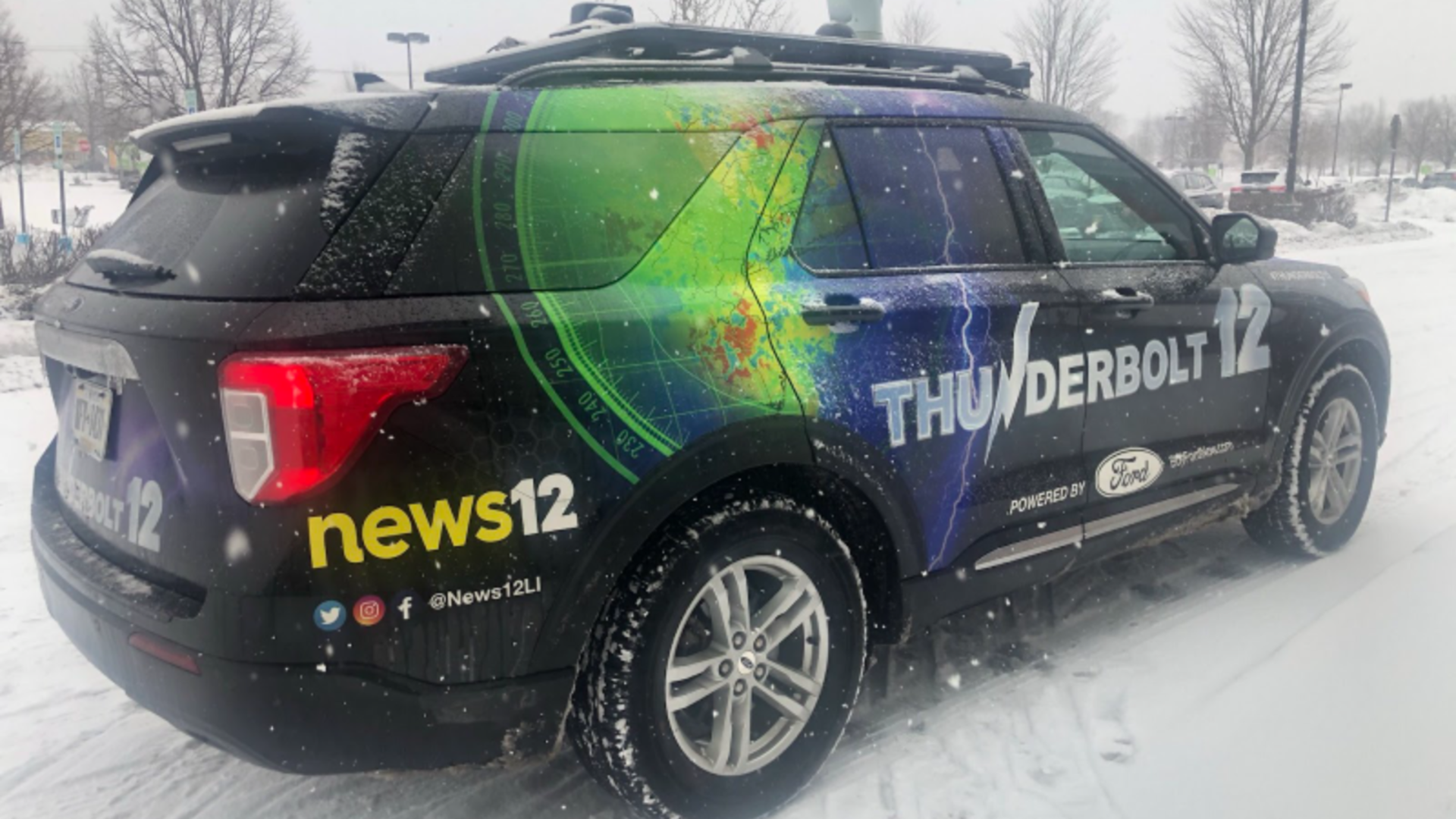 Thunderbolt 12 helping keep you safe on the roads
Thunderbolt 12 helping keep you safe on the roads
SLIP AND FALL SAFETY
The word 'trauma' brings several types of injuries to mind, but the most common form of trauma in the United States is trauma from falls.
Yale University's Dr. Arjun Venkatesh says that falls from ice can happen suddenly due to quickly changing weather conditions. When they happen, Dr. Venkatesh says it's a good idea to wait 10-15 seconds to orient yourself and make sure you feel alright. If so, then proceed carefully.
If you hit your head and experience nausea, vomiting, headaches or blurred vision - then you may have head trauma and need to seek immediate medical attention.
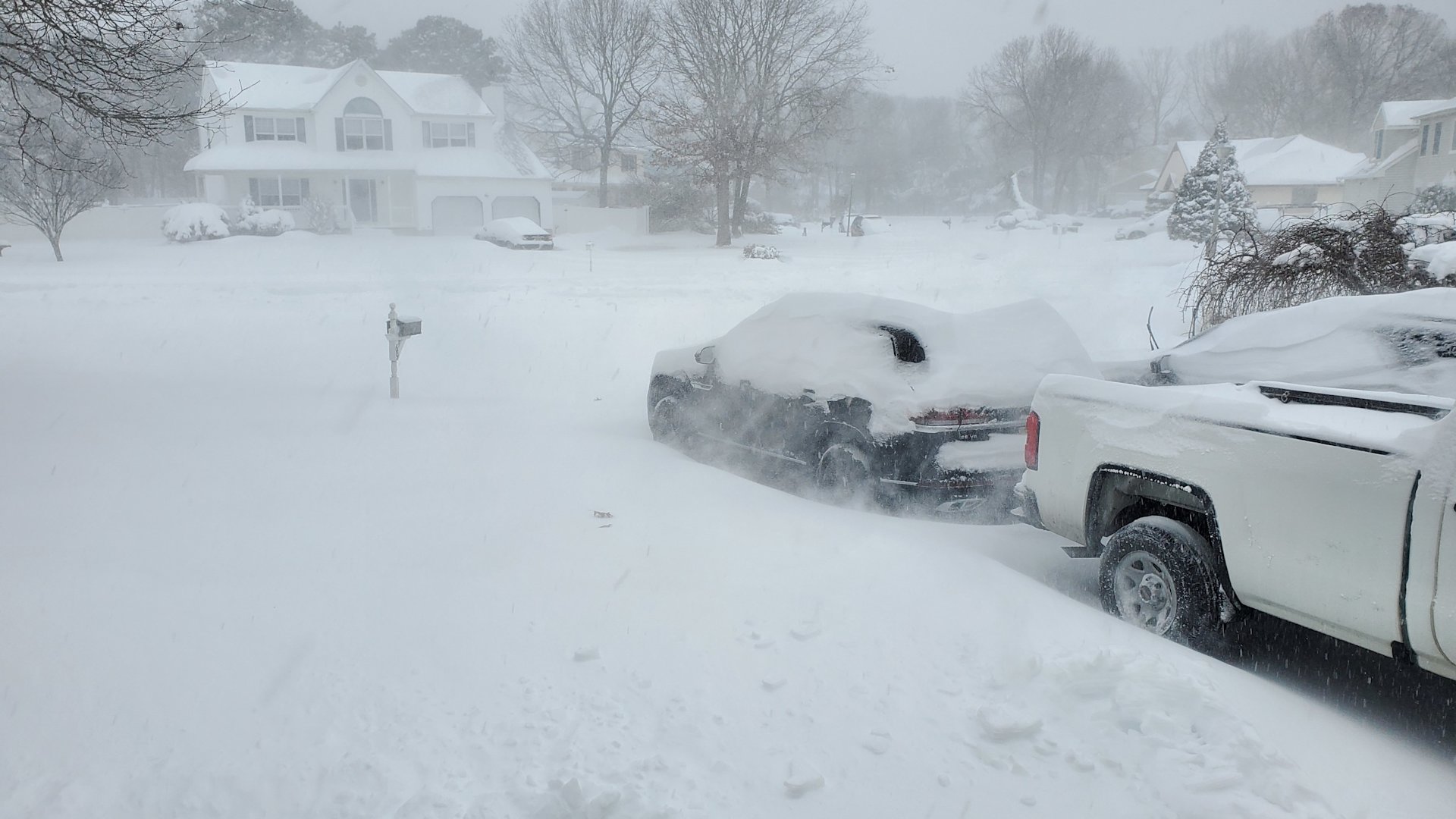 Brick NJ | Snow Day! | January 2022 Nor'Easter | Jay Gill
Brick NJ | Snow Day! | January 2022 Nor'Easter | Jay Gill
LIFE HACK: TIPS FOR WALKING ON ICE
We can learn a lot by watching animals in nature. In this case, penguins can teach humans something about walking on ice.
When walking on ice, keeping your center of gravity over your front leg. Waddling like a penguin can help you navigate particularly slippery situations.
Need some traction? Coffee grounds can help you with your footing on icy surfaces.
 East Flastbush blanketed in snow during the late January Nor'Easter of 2022 | Viewer Photo
East Flastbush blanketed in snow during the late January Nor'Easter of 2022 | Viewer Photo
ON THIN ICE
There is no such thing as 100% safe ice. Knowing essential safety tips for navigating ice - could save your life.
If you fall through the ice time is truly of the essence.
"You have about 45 minutes to an hour before you have some serious threats of medical issues," says Trooper Anthony Buro of the New Jersey State Police.
One of the main keys to getting to safety, according to Trooper Buro, is to avoid panicking. It is important to stay focused and concentrate on swimming - not flailing - to safety.
PREVENTING FROSTBITE
Frostbite can sneak up on you if you're not aware of the warning signs.
Dr. Arjun Venkatesh shows you when you just need to warm back up - and when you need to seek medical help.
 Westhampton Beach | After the Blizzard | Nancy St. John (January 2022)
Westhampton Beach | After the Blizzard | Nancy St. John (January 2022)
THE DANGERS OF HYPOTHERMIA
Hypothermia - when your body loses heat faster than it can produce it - is the leading cause of death when temps take a dive. Contrary to popular belief, it doesn't even need to be freezing to cause serious problems.
Everyone should take note and be ready to battle hypothermia in cold temperatures. Some people, however, are more at risk:
- The elderly
- Babies sleeping in cold temperatures
- People using alcohol or illicit drugs
- People outdoors for long periods of time
You can prevent hypothermia by dressing in layers, wearing a hat, wearing a scarf and gloves and by staying hydrated.
 A view of the Manasquan River during the January 2022 nor'easter. Photo by Robert Castelo.
A view of the Manasquan River during the January 2022 nor'easter. Photo by Robert Castelo.
THE LOWDOWN ON LAYERS
It's common knowledge that wearing layers can help keep you safe in dangerously cold weather.
However, Dr. Arjun Venkatesh of Yale University says the type of material you wear and the fit can help give you better protection.
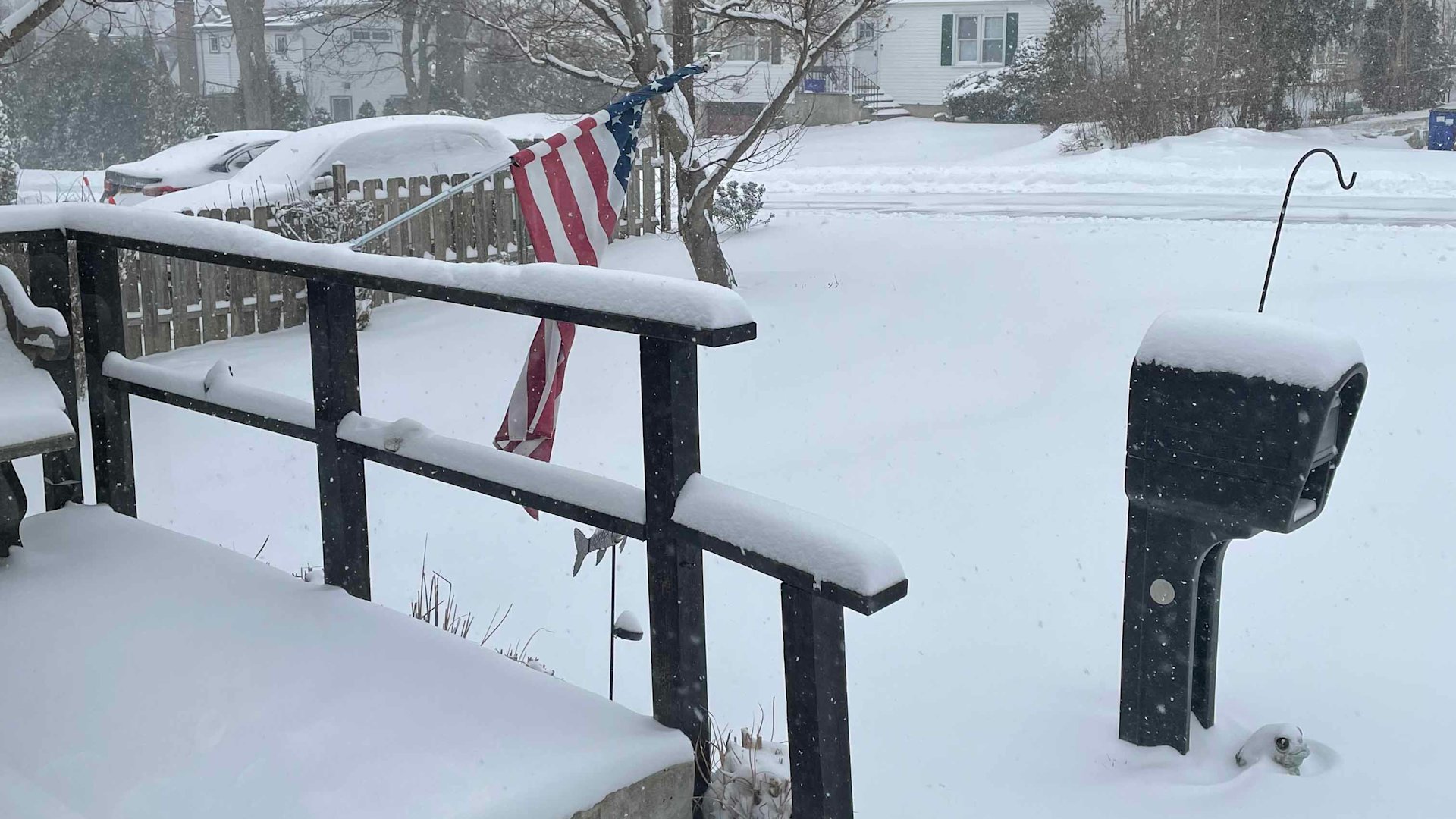 Snow in Hawthorne, NY | Terrence McCue
Snow in Hawthorne, NY | Terrence McCue
WINTER...WHAT'S NOT TO LOVE?
For some, this mild winter has been a major disappointment. Here's why they want more snow and less spring!
HOW MANY DAYS UNTIL SPRING?
Hate snow? This has been the winter for you. Here's why snow-haters are thrilled about the warmer temps.
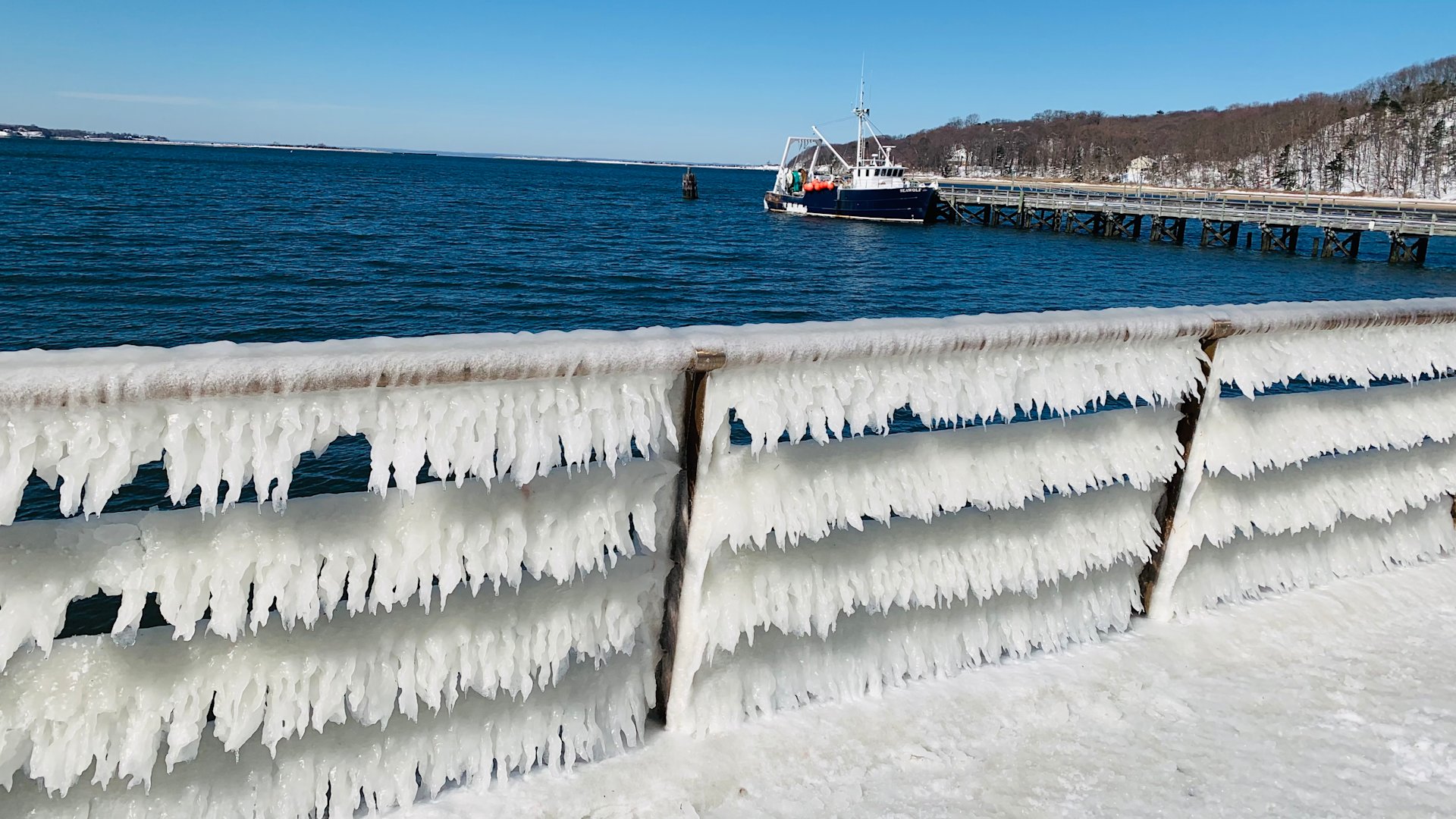 Icicles and ice in Port Jefferson | Photo by Erin Gearns
Icicles and ice in Port Jefferson | Photo by Erin Gearns
TIPS IF YOU GET STRANDED IN A CAR
It can happen in an instant. A road you thought was passable suddenly stops you in your tracks - literally.
If you get stuck in a car during snowy weather, these steps provided by AAA's Fran Mayko show you what to do:
Call 911: Signal emergency officials that you need help.
Clear snow from your tailpipe: This will stop the building of carbon monoxide.
Use a visual signal: A brightly colored or reflective piece of cloth tied to your vehicle helps others see you. Also keep your dome lights on.
Stay in your car: Do not walk around in unsafe conditions.
Stay warm: Run the car for about 10 minutes every hour to run the heat, but keep your window open.
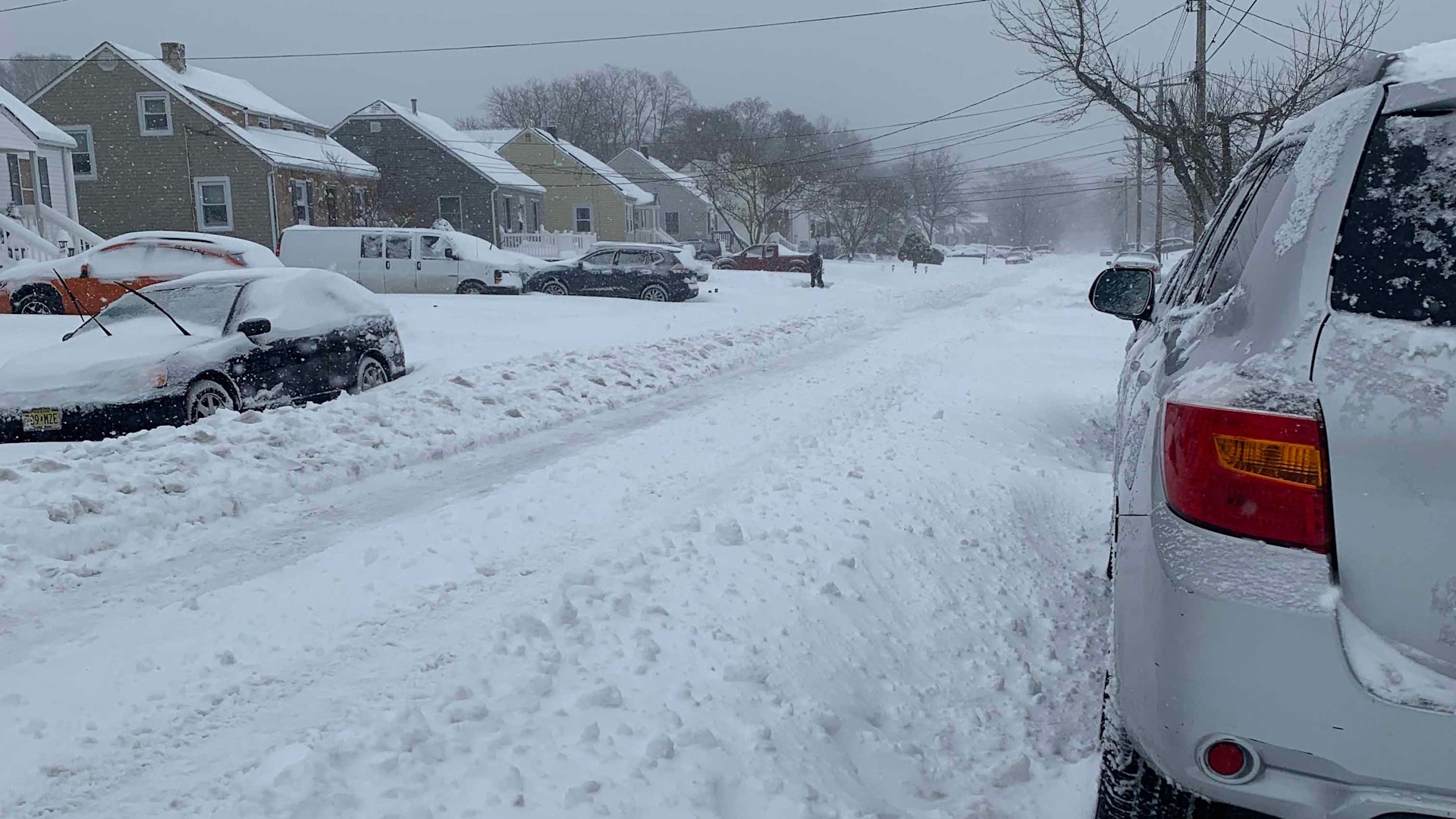 18 inches of snow in Ocean Township during January 2022 Nor'easter | Photo by Anne Massi
18 inches of snow in Ocean Township during January 2022 Nor'easter | Photo by Anne Massi
GUIDES AND RESOURCES
Project Credits:
Frank Bruce: Chief Photographer, News 12 Connecticut
Alex Calamia: Meteorologist
Dave Curren: Lead Meteorologist, News 12 New Jersey
Jonathan Cubit: Meteorologist, News 12 Connecticut
James DiGregorio: Lead Senior Graphic Designer
Brian Endres: Senior Videographer, News 12 Long Island
Addison Green: Meteorologist
Audrey Gruber: Vice President of News and Assistant General Manager, Altice News
Rich Hoffman: Lead Meteorologist, News 12 Long Island
Brian Jingeleski: Chief Photographer, News 12 Long Island
Nancy Lynch: Senior Producer, News 12 Special Projects
Kristin Malaspina: SVP, Chief Content Officer, Altice News
Rocco Marrongelli: Graphic Designer
Jim Mennino: Senior Videographer, News 12 Connecticut
Erin Myles: Editor
Hope Osemwenkhae: Meteorologist
Frank Pokorney: Director of Digital News
Michele Powers: Meteorologist
Mike Rizzo: Lead Meteorologist, News 12 New Jersey
Mike Roberts: Senior Videographer, News 12 New Jersey
Sandrina Rodrigues: Senior Producer, News 12 Digital - Guide Research
Jose Sanchez: Senior Videographer, News 12 The Bronx/Brooklyn
Dan Scaturro: Senior Video Editor
Andrew Schoengold: Sr Director, Creative Services
Frank Shields: Operations Manager
Mark Sogofsky: Senior Videographer, News 12 Connecticut
Alain Tingue: Director of Operations
Charles Werneke: Chief Photographer, News 12 New Jersey
Chris Wood: Senior Videographer


 A man tries to dig his car out of the snow while a line of cars behind him waits for the LIE to reopen during a snowstorm. (AP Photo/Seth Wenig)
A man tries to dig his car out of the snow while a line of cars behind him waits for the LIE to reopen during a snowstorm. (AP Photo/Seth Wenig)

 Drone shot of Ossining after the January 2022 nor'easter | Jeremy Ofori
Drone shot of Ossining after the January 2022 nor'easter | Jeremy Ofori
 Thunderbolt 12 helping keep you safe on the roads
Thunderbolt 12 helping keep you safe on the roads
 Brick NJ | Snow Day! | January 2022 Nor'Easter | Jay Gill
Brick NJ | Snow Day! | January 2022 Nor'Easter | Jay Gill
 East Flastbush blanketed in snow during the late January Nor'Easter of 2022 | Viewer Photo
East Flastbush blanketed in snow during the late January Nor'Easter of 2022 | Viewer Photo

 Westhampton Beach | After the Blizzard | Nancy St. John (January 2022)
Westhampton Beach | After the Blizzard | Nancy St. John (January 2022)
 A view of the Manasquan River during the January 2022 nor'easter. Photo by Robert Castelo.
A view of the Manasquan River during the January 2022 nor'easter. Photo by Robert Castelo.
 Snow in Hawthorne, NY | Terrence McCue
Snow in Hawthorne, NY | Terrence McCue
 Icicles and ice in Port Jefferson | Photo by Erin Gearns
Icicles and ice in Port Jefferson | Photo by Erin Gearns
 18 inches of snow in Ocean Township during January 2022 Nor'easter | Photo by Anne Massi
18 inches of snow in Ocean Township during January 2022 Nor'easter | Photo by Anne Massi